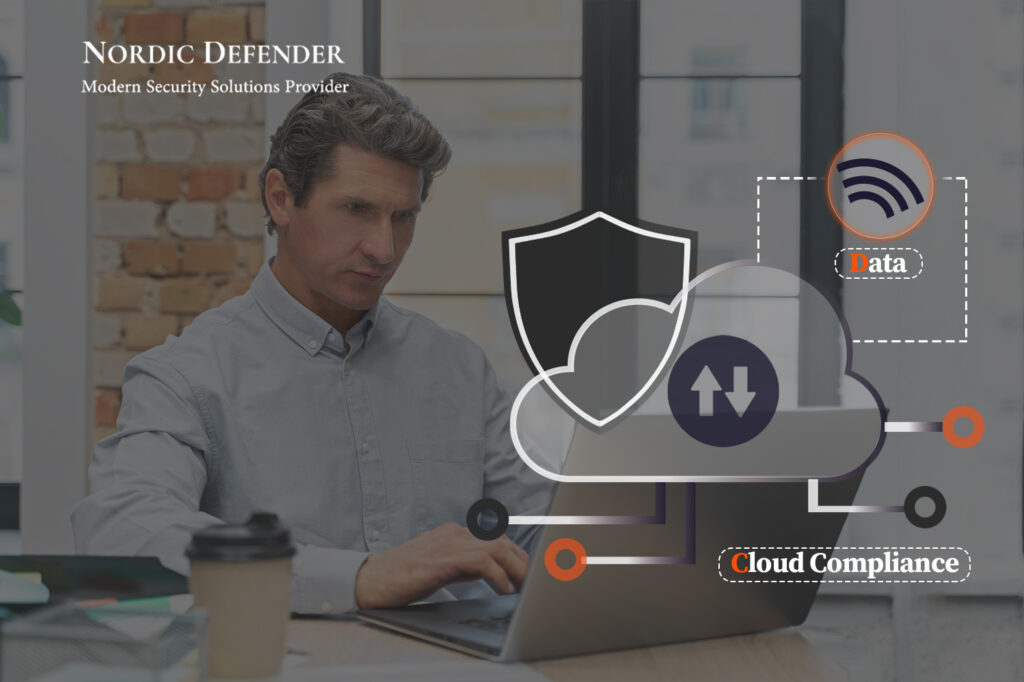In the digital transformation era, businesses must adapt and implement technologies that would make their operations run smoothly and fast. However, not everything that comes with it is the perks. Let’s take the cloud for example; businesses are moving their operations to the cloud at a fast pace. While this shift offers numerous benefits such as scalability, cost-efficiency, and flexibility, it also brings forth a unique set of challenges in terms of compliance with laws, regulations, and protocols. This is where the Cloud Compliance Framework comes into play.
What is Cloud Compliance Framework and why is it important?
In the vast expanse of the digital universe, the ‘cloud’ has emerged as a powerful force. It’s not just a nebulous concept; it’s a tangible platform that’s transforming businesses across the globe. But as we venture deeper into this realm, we encounter a critical challenge – compliance.
The Cloud Compliance Framework is our guide in this new frontier. It’s a structured set of guidelines that help organizations navigate the complex web of laws, regulations, and standards that govern their industry. But it’s more than just a rulebook; it’s a strategic tool that ensures our cloud operations are secure, transparent, and aligned with the necessary compliance standards.
So why is it important? In today’s digital age, data is the new currency. And like any currency, it needs to be safeguarded. The Cloud Compliance Framework helps protect this valuable asset by ensuring that our cloud operations adhere to the highest standards of security and privacy. It also fosters trust with customers, stakeholders, and regulators by demonstrating our commitment to responsible data management.
What are the Key Components of the Cloud Compliance Framework?
The Cloud Compliance Framework is like a well-oiled machine, with each component playing a crucial role in ensuring smooth and secure operations in the cloud. Let’s take a closer look at these key components:
- Regulatory Compliance: This component ensures that the organization’s cloud operations comply with the relevant laws and regulations. It involves understanding and adhering to the legal requirements of the jurisdictions in which the organization operates.
- Security Controls: This involves implementing robust security measures to protect the organization’s data and systems in the cloud. It includes measures such as encryption, access controls, and intrusion detection systems.
- Risk Management: This component involves identifying, assessing, and mitigating risks associated with the organization’s cloud operations. It includes conducting regular risk assessments and implementing appropriate risk mitigation strategies.
- Audit and Assurance: This involves regular audits to verify that the organization’s cloud operations are compliant with the established framework. It also provides assurance to stakeholders that the organization is managing its cloud operations responsibly.
- Incident Response: This component ensures that the organization is prepared to respond effectively to any security incidents or breaches. It involves having a well-defined incident response plan in place.
- Training and Awareness: This involves educating employees about the importance of cloud compliance and training them on the organization’s cloud compliance policies and procedures.
5 Examples of Cloud Compliance Frameworks
As we journey through the digital landscape, we encounter various signposts that guide us toward compliance in the cloud. These signposts, known as Cloud Compliance Frameworks, are not one-size-fits-all. They are diverse, each tailored to address specific needs, sectors, and regulatory environments.
From international standards like ISO 27001 to sector-specific regulations like HIPAA for healthcare, these frameworks provide the blueprint for building a secure and compliant cloud infrastructure. They serve as our compass, guiding us through the complex maze of laws, regulations, and standards that govern the cloud. Now, let’s explore cloud compliance framework examples:
- ISO 27001: This is an international standard that provides a framework for establishing, implementing, maintaining, and continually improving an Information Security Management System (ISMS). It covers a wide range of security controls and best practices, making it a comprehensive guide for cloud compliance. Read more about ISO 27001 Here.
- NIST 800-53: Developed by the National Institute of Standards and Technology, this framework provides a catalog of security and privacy controls for all U.S. federal information systems except those related to national security. It’s widely adopted in the private sector and is particularly useful for cloud compliance in the government sector. Read more about NIST 800-53 Here.
- PCI DSS: The Payment Card Industry Data Security Standard is a must for any organization that handles credit card transactions. It provides a framework for securing cardholder data that is stored, processed, or transmitted in the cloud.
- HIPAA: The Health Insurance Portability and Accountability Act sets the standard for protecting sensitive patient data. Any company that deals with protected health information (PHI) must ensure that all the required physical, network, and process security measures are in place and followed, including in the cloud.
- GDPR: The General Data Protection Regulation is a regulation in EU law on data protection and privacy. It’s one of the most stringent privacy laws in the world and has significant implications for cloud compliance, particularly for organizations operating in or dealing with the EU.
These are just a few examples of the many Cloud Compliance Frameworks out there. Each one is tailored to specific needs and sectors, but all share the common goal of ensuring secure and compliant operations in the cloud.
Conclusion: Navigating the Cloud Compliance Landscape
Our exploration of the Cloud Compliance Framework has provided valuable insights into the complexities of maintaining compliance in the cloud. We’ve dissected its key components, explored diverse frameworks, and understood their significance in ensuring secure and compliant cloud operations.
Each framework, from ISO 27001 to HIPAA, caters to specific needs and regulatory environments, offering unique guidance for organizations. In essence, these frameworks are more than guidelines; they’re strategic tools that foster trust, ensure security, and pave the way for innovation in the cloud.
As we continue our cloud journey, these frameworks will remain our guides, leading us towards a secure and compliant digital future.
